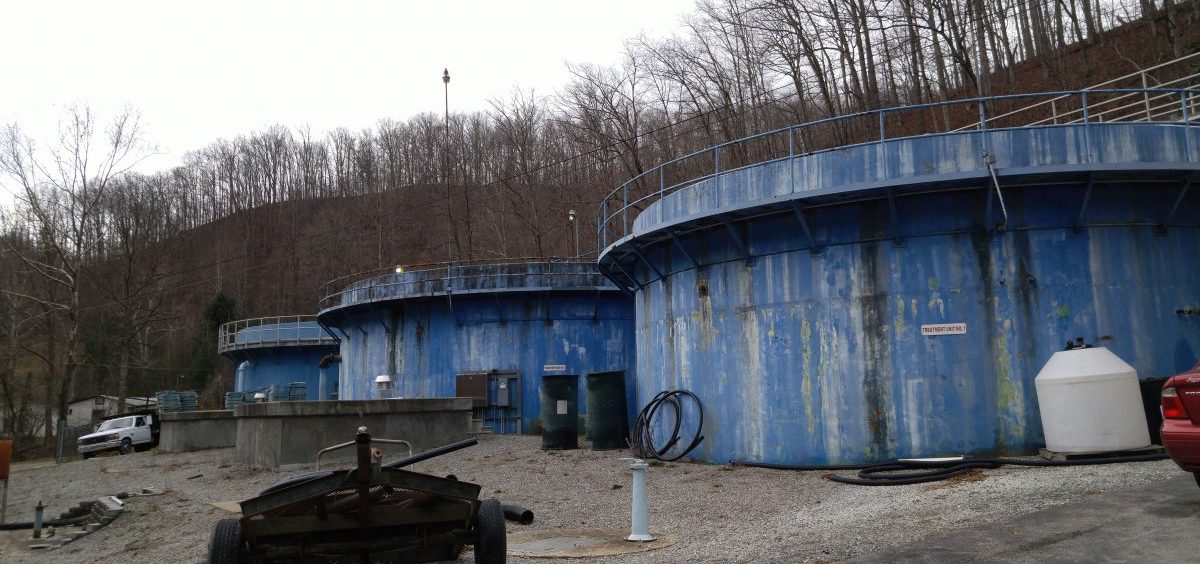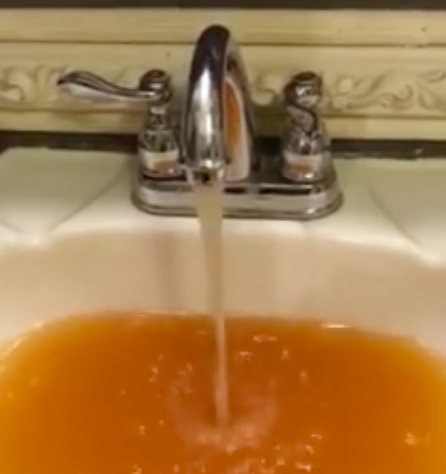News

Report: Water Unaffordable for Nearly Half of Martin Co., Kentucky
By: Sydney Boles | Ohio Valley ReSource
Posted on:
A new report finds nearly half the residents of Martin County, Kentucky, cannot afford water service. Local activists with the Martin County Concerned Citizens are ringing alarm bells about water affordability as the beleaguered county faces another likely water rate increase in the coming months.
Since the ReSource first reported on its water crisis two years ago, Martin County has become the prime example of rural communities struggling to maintain aging water systems.
The county in eastern Kentucky’s coal country is one of the poorest in the state, but it boasts the eighth highest average water bill out of the 141 districts regulated by the state’s Public Service Commission, according to the analysts behind a new report. Despite the high cost of service, Martin County’s ailing and outdated water system has left residents without water for days at a time, often delivers water that is undrinkable, and some residents claim it makes them sick.
Soon, Martin County residents are likely to face a water rate increase that will mean more than half the county’s residents cannot afford water.
As populations in rural America continue to drop, the rising cost of maintaining aging water systems falls on fewer residents. In central Appalachia, where average incomes are well below the national average, the burden imposed by those rising costs can be too much to bear.
“There are many places in Kentucky where the citizens simply can’t afford to pay the rates necessary to get the repairs done,” said Mary Cromer, an attorney with the Appalachian Citizens Law Center.
“Captive Customers”
Martin County is under investigation for the third time since 2002 for financial mismanagement, service interruptions and excessive water loss. The district has violated federal water quality standards 90 times since 2001, according to the report, and data from the Public Service Commission shows that Martin County loses up to 70 percent of the water it treats before the water reaches residents’ taps.
In a recent order, the PSC called the district’s condition “grim and desperate.” PSC Chairman Michael Schmitt added, “residents of Martin County are, unfortunately, the captive customers of what most certainly has been, over the last two decades, the most poorly operated water district in the state of Kentucky.”

Once a coal-producing mecca, Martin County has seen employment fall by 32 percent since July 2010. The water affordability analysis showed that 25 percent of Martin County residents live on $15,000 per year or less, with about 18 percent surviving on just $10,000 or less.
“When you’re making less than $10,000 a year, pretty much everything is unaffordable,” said Cromer, who is representing Martin County residents in proceedings with the PSC.
National and international bodies have guidelines to help water districts price water at an affordable level. The United Nations says water is unaffordable when it costs more than 3 percent of household income; the Environmental Protection Agency places that figure at 2.5 percent.
According to the report, which was produced by the Appalachian Citizens Law Center and the community group Martin County Concerned Citizens, 46 percent of all Martin County residents are paying a share of household income that exceeds the EPA guidelines. Martin County’s poorest residents, those earning less than $10,000 per year, pay as much as 6.5 percent of their income toward water bills.
The report found that Breathitt County, Kentucky, has the state’s highest water burden, at 2.7 percent, and Martin County has the second highest at 2.4 percent. Customers in Martin County are spending 75 percent more of their income on their water bills than are customers in Oldham County, which has the state’s lowest water burden.
The potential upcoming increase could be the second within a year, after a series of rate hearings increased the average bill by 41 percent since January 2018 to an average $54.37 per household in November of the same year.
The November increase also mandated that Martin County hire an outside management company to run the district’s affairs, the key move that will likely render another rate hike necessary.
Missouri-based Alliance Water Resources was the only company to submit a bid and is currently negotiating the terms of the contract with the Martin County water board.
“We feel pretty confident, from our conversations with Alliance Water Resources, and just looking at what it would take for a for-profit company to run the district, that it’s going to require another rate increase,” Cromer said.
At a recent meeting of concerned citizens at Martin County High School, residents expressed anger that their limited dollars would be used to pay a for-profit, out-of-state company.
“Don’t we have nobody here who could manage us?” asked one attendee.
PSC spokesperson Andrew Melnykovych said in a recent interview that an additional rate increase is not necessarily guaranteed as a result of hiring outside management. “It would depend on what the cost of the new management is relative to what they are paying now for their internal management services. And are there operational efficiencies that are going to be achieved through outside management that reduce cost somewhere else?”
Martin Countians are already struggling to pay. In a system with 3,500 customers, 300 disconnect notices were issued in July alone, according to the report, and the district has gone so far as to arrest a resident for stealing water.
With a 25 percent increase in water rates, the water burden on Martin County’s poorest residents could rise to 8.2 percent.
“I barely make it from month to month now,” said a Martin County resident who went by Kim C., sharing her story in the report. “So if our water bills go up, I like many would have to have it disconnected because I could not afford it.”
Another resident, Ruth Crum, said, “Our bills are already around $81 or higher a month. We are on Social Security, we can’t afford higher water bills…If they raise our water bill, we will disconnect our city water.”
The PSC maintains that according to statutes, it cannot consider customers’ ability to pay when considering potential rate increases.
Not Alone
Martin County is the most notorious of Kentucky’s rural water systems, but it is by no means alone in its difficulties. The PSC in March announced a new investigation into 12 water utilities struggling with water loss rates similar to Martin County’s. The most recent report for Kentucky from the American Society of Civil Engineers found that Kentucky’s drinking water infrastructure needs $8.2 billion in investment, an increase of 33 percent from 2013 to 2017. Ohio and West Virginia require $13.4 billion and $1.39 billion, respectively.
“I am proud of Kentucky for how much effort has been put into the drinking water system,” said Colette Easter, Infrastructure Report Card Technical Chair with ASCE. “But we are dealing with systems that are old.” Easter said the reduced demand for water due to a declining population compounds the problem.
Martin County attorney Cromer said her goal was for rural water districts like Martin County to think bigger. “People need to be rethinking how we’re designing water systems and how we’re looking at rates and how we’re funding infrastructure repairs,” she said. “Maybe we need to be looking at smaller, more resilient systems that are less dependent on running lines up and over mountains and are more community-based.”
Martin County residents plan to call their legislators, hold protests and continue speaking out to oppose further rate increases.
The PSC has scheduled a hearing on October 22 on Martin County’s water loss and the efficacy of current rate structures.


